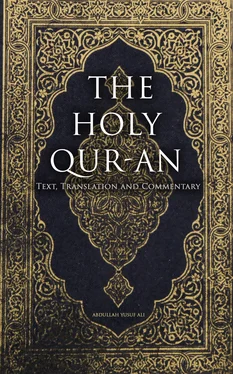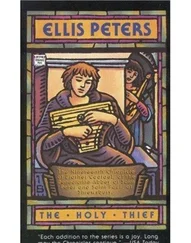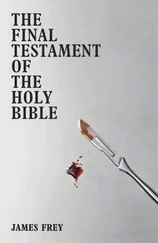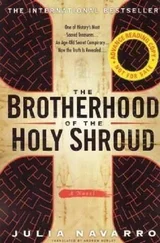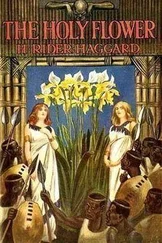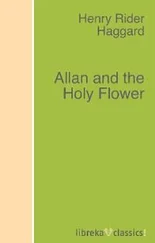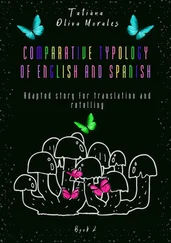The English language being widely spread over the world, many people interested in Islam will get their ideas of the Quran from English translations. It is good that qualified Muslims should make the attempt to present the picture which their own mental and spiritual vision presents to themselves. The Indian educational system has enthroned English as the common language of culture for a population of 350 millions. The most educated of its 80 millions of Mus1ims—unless they know Arabic—look to English as the most cultivated medium of expression. Their non-Muslim fellow-countrymen judge—usually misjudge—their religion by the material which is available to them in English. We should improve and increase this material as much as we can and from as many points of view as we can. Some Muslim nations—like the Turks—have now determined to provide their religious literature (including the Holy Book) in their own national language. In order to keep them in touch with the thought and points of view of their brethren in faith, the English language would under present conditions be the most convenient medium. These are the considerations which have moved me to undertake the stupendous task of providing an English Interpretation of the Quran. I pray for strength and light, so that I may be enabled to succeed in this service to Islam.
Useful Works Of Reference
Table of Contents
The wide compass of the Qur’an makes it necessary to consult works of reference on almost every conceivable subject, to enable us to elucidate the various points that arise. To deal adequately with such a Book, the widest reading is necessary as well as the most varied experience in life. But the interests of readers require that a handy Commentary should not roam too far afield. Bearing this in view the three essential kinds of books would be: (a) Previous Commentaries; (b) previous Translations; (c) Dictionaries and General Works of Reference, easily accessible. I have set out (a) and (b) in the previous tow Notes. I note a few under (c): -
1 Imam Abdul-Qasim Husain Ragib’s Mufradat: a concise Arabic dictionary of words and phrases in the Qur’an. Already mentioned under Commentaries.
2 The well-known Arabic Dictionary, Qamus.
3 The well-known Arabic Dictionary, Lisan-ul-Arab.
4 The concise Arabic-Persion Dictionary, Surah.
5 J. Penrice’s Dictionary & Glossary of the Koran.
6 E. W. Lane: English-Arabic Lexicon.
7 Imam Jalal-ud-din Suyuti’s Itwan fi ’ulum-il-Qur’an: a veritable encyclopædia of Quranic sciences.
8 Nöldeke under Schwally: Geschichte des Qorans. A German Essay on the Chronology of the Qur’an. Its criticism and conclusions are from a non-Muslim point of view and to us not always acceptable, though it is practically the last word of European scholarship on the subject.
9 Encyclopædia of Islam. Nearly completed. Very unequal in its various parts.
10 Encyclopædia Britannica, 14th edition. A great advance on previous editions, as regards the attention it devotes to Arabic learning.
11 Hughes’s Dictionary of Islam. Out of date, bul still useful.
12 Ibn Hisham: Sirat-ur-Rasul. A fairly detailed Life of the Messenger.
13 Maulvi Shibli Nu’mani (d. 1914 = 1334 H.): Sirat-un-Nabi (an Urdu Life of the Messenger).
14 Fath-ur-Rahman, an Arabic Concordance to the Qur’an, by Faidh-ullah Bik Hasani, printed in Cairo in 1346 H. Full and well arranged, and easy to use.
Transliteration Of Arabic Words And Names
Table of Contents
The following table shows the system which I have followed in transliterating the letters of the Arabic alphabet :—
ا Consonantal sound a
ء Consonantal sound a
ا Long vowel * ā
ب …………………… b
ت …………………… t
ث …………………… ṯẖ
ج …………………… j
ح …………………… ḥ
خ …………………… ḵẖ
د …………………… d
ذ …………………… ẓ
ر …………………… r
ز …………………… z
س …………………… s
ش …………………… sh
ص …………………… ṣ
ض …………………… ḏẖ
ط …………………… ṭ
ظ …………………… ẕ
ع …………………… ‘ (inverted apostrophe)
غ …………………… ḡ
ف …………………… f
ق …………………… q
ك …………………… k
ل …………………… l
م …………………… m
ن …………………… n
هـ ه …………………… h
و consonant w
و long vowel* ū
و diphthong au
ي consonant y
ي long vowel* ī
ي diphthong ai
Short vowels:
َ– ( fatḥa ) a ِ– ( kasra ) i ُ– ( ḏẖamma ) u
1. For the hamzā (ء) I have used no distinctive sign. An apostrophe for it and an inverted apostrophe for the ‘ain (ع), or vice versa , is confusing to English readers. As a moved consonant, it is sufficiently shown in English by the long or short vowel which moves it, e.g. , ab , Raūf . Where it is a hiatus preceded by a fatḥa , I have shown it by a second a : thus, Iqraa , the cave of Hiraa . In other cases it has not been possible to show it without using a distinctive sign. The name of the Holy Book is usually written Qurān ; but I prefer to write Qur-ān .
2. The final h preceded by the short a is scarcely pronounced, and I have left it out. Hence Sūra, Fātiḥa, Hijra, etc., where the Arabic spelling would require Sūrah, Fātihah, Hijrah, etc.
3. In internationalised words and names I have used the spelling ordinarily current in English ; e.g. , Mecca, Medina, Maulvi, Urdu, Islam, Israel, Abraham, Jacob. Here the boundary is thin and rather ill-defined, and possibly my practice and that of my proof-readers have not been absolutely uniform.
4. Some names, e.g. , Ishmael, Hagar, etc., have acquired a contemptuous association in their European forms, while the persons they represent are sacred personages held in great honour in Islam. I have, therefore, avoided the European forms and used the Arabic forms, Ismā’īl, Hājar, etc.
Where it is really pronounced long. Hence ḵẖalaqnā-kum but ḵẖalaqnal-insān ; Abū Sufyān but Abul-Qāsim ; fin-nār but fī-hi.
Table of Contents
I have not used many abbreviations. Those I have used are shown below:-
A.D. = Anno Domini = year of the Christian Calender.
A.H. = Anno Hegiræ = year of the Hijra.
Bk. = Book
C. = The running Commentary, in rhythmic prose.
Cf. = compare.
d. = date of death of an author (to show the age in which he lived).
Deut. = The Book of Deuteronomy in the Old Testament.
E.B. = Encyclopædia Britannica, 14th edition.
e.g. = exempli gratia for example.
Exod. = The Book of Exodus, Old Testament.
Gen. = The Book of Genesis, Old Testament.
H. = years of the Hijra.
H.G.S. = Hafiz Gulam Sarwar’s Translation of the Qur’an.
i.e = id est = that is.
Josh. = Book of Hoshua, Old Testament.
Matt. = Gospel of St. Matthew, New Testament.
M.M.A. = Maulvi Muhammad ’Ali’s Translation of the Qur’an.
M.P. = Mr. M. Pickthall’s The Meaninf of the Glorious Koran.
n. = note.
nn. = notes
Num = The Book of Numbers, Old Testament.
p. = page
pp. = pages.
Q. = Qur’an
2:25 = Qur’an, Surah 20, verse 25.
Rev. = Revelation of St John, New Testament.
Читать дальше
